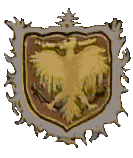

Designation:AF-6 Hornet Space Attack Plane |

|
||||

|
|||||
| Total Length: | 6.1 m (without missile) |
| Total Height: | 6.3 m |
| Total Wingspan: | 11.9 m |
| Total Dry Weight: | 12.0 metric tons |
While the electronics suites of these vehicles differed with their respective dates of operational service, all electronics were regularly updated, and during the Second Robotech War the following standard was in use:
The skin of the Hornet is composed of an advanced titanium-steel alloy. The skin stops all small arms fire, provides fair to good protection against heavier infantry weapons, such as a 12.7mm machinegun round, and poor to fair resistance to light mecha-mounted weaponry, such as the Zentraedi 22.3mm HE autocannon round.
The Hornet provides full protection from nuclear, biological, and chemical hazards, using an overpressure cockpit environment activated by radiation and hazardous chemical sensors, or manually when biological warfare conditions are anticipated. The internal consumables supplies can provide atmosphere for one day maximum.
The AF-6 Hornet was specially designed by the Southern Cross' Tactical Space Corps to attack massed targets. Introduced in 2021, the Hornet was a very strange craft, with bat-like wings and a single missile sticking out from under the front of the craft. The total appearance was much like its insect namesake, the mecha overall resembling a hornet in attack posture, with the large missile resembling the stinger. Because of its odd shape, the Hornet is only capable of vertical landings on Earth on the engine nacelles, and a safe landing takes unflinching nerves. The cluster missile was designed to be used against Zentraedi mecha concentrations, and the sub-munitions each were powerful and accurate enough to destroy a Zentraedi Battlepod. Combat simulations indicated that against a lightly-armored opponent like the Zentraedi, a single cluster missile could score over one hundred mobility kills. In addition to the heavy missile, the Hornet carried four laser cannons around the stinger for dogfights, as well as two Hammerhead multi-missile racks.
This armament was also meant to ensure that the Hornet, which was rather slow and vulnerable, would indeed survive to reach its targets. However, during war-games and maneuvers, Chief of Staff Rolf Emerson repeatedly defeated the efforts of the Hornet squadrons. Every time that Emerson simulated Zentraedi mecha and tactics, he dispersed the mecha under his command, so that the Hornet pilots had very little concentrations to fire at. Consequently, the Hornet was only procured in small numbers, as a special-purpose attack plane.
The Hornet never saw much service, considering its limited numbers and peacetime deployment, and with the arrival of the Robotech Masters and their heavily armored Bioroids, against whom the Hornet's missile's submunitions were less effective, the Hornet was finally withdrawn from service in 2031.
| Hornet Cockpit View: |  |
Return to Southern Cross Aircraft Index.
Go to Robotech Reference Guide Home Page.
Robotech (R) is the property of Harmony Gold. This document is in no way intended to infringe upon their rights.
Content by Pieter Thomassen and Peter Walker